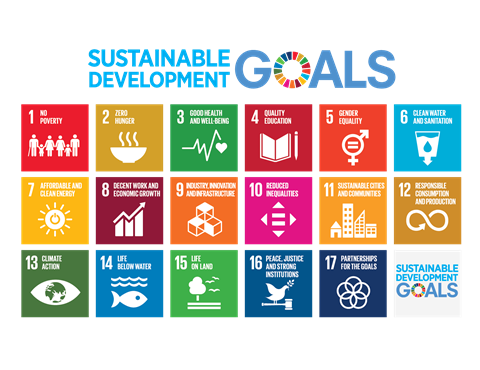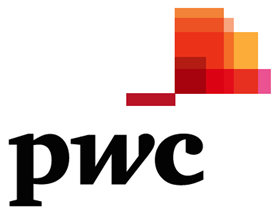Why the SDGs are relevant to institutional investors, why there is an expectation that investors will contribute, and the case for why investors should want to.
The launch of the UN Sustainable Development Goals (SDGs) in 2015 has made clear that the global community of countries relies heavily on the private sector to solve some of the most urgent problems the world is facing. Both companies and institutional investors are being asked to contribute to the SDGs through their business activities, asset allocation and investment decisions.
Discussions taking place since the launch of the SDGs tend to focus on how investors can contribute to the SDGs. But it is often too easily taken for granted that investors are already convinced they should. The SDG investment case tries to answer the question: Why are the SDGs relevant to institutional investors? It explains what the SDGs are, why there is an expectation that investors will contribute, and then makes the case for why investors should want to.
Since the launch of the Principles for Responsible Investment in 2006, the preamble to the Principles has said: “We recognise that applying these Principles may better align investors with broader objectives of society.” Never before have these “broader objectives of society” been more clearly defined than in the SDGs. All the countries of the world have agreed on a sustainability agenda, covering three broad areas – economic, social and environmental development – and comprising 17 global goals, further developed in 169 targets, to be reached by 2030.
As well as the SDGs providing the first generally agreed framework that defines the “broader objectives of society”, SDG 17 clearly shows the global community’s need to get investors on board. But to do so, investors will want to know how contributing to the SDGs will help them fulfil liabilities and beneficiaries’/clients’ expectations about risk-adjusted returns. They will ask: Why should I consider the SDGs relevant to my investment strategy, policy, asset allocation, investment decisions and active ownership?

We group the SDGs’ relevance to responsible investors into five overarching arguments:
1. The SDGs are the globally agreed sustainability framework
The SDGs are an articulation of the world’s most pressing sustainability issues and as such act as the globally agreed sustainability framework. The SDGs can support investors in understanding the sustainability trends relevant to investment activity and their fiduciary duties.
2. Macro risks: The SDGs are an unavoidable consideration for “universal owners”
Large institutional investors relying on modern portfolio theory can be considered “universal owners”: their highly-diversified, long-term portfolios are sufficiently representative of global capital markets that they effectively hold a slice of the overall market, making their investment returns dependent on the continuing good health of the overall economy. They can therefore improve their longterm financial performance by acting in such a way as to encourage sustainable economies and markets.
Failure to achieve the SDGs will impact all countries and sectors to some degree, and as such create macro financial risks. Universal owners’ portfolios are inevitably exposed to these growing and widespread economic risks – which are in large part caused by the companies and other entities in which they are invested.
3. Macro opportunities: The SDGs will drive global economic growth
Achieving the SDGs will be a key driver of global economic growth, which any long-term investor will acknowledge as the main ultimate structural source of financial return: over the long term, economic growth is the fundamental driver of the growth in corporate revenues and earnings, which in turn drive returns from equities and other assets.
The SDGs aim to create a viable model for the future in which all economic growth is achieved without compromising our environment or placing unfair burdens on societies. Embracing the relationship with society, the environment and government creates a new strategic lens through which to view and judge business success.
4. Micro risks: The SDGs as a risk framework
In the last 10 years, responsible investment has evolved from being a primarily exclusionary approach to one focused on identifying companies that can effectively manage ESG risks and opportunities. The challenges put forward by the SDGs reflect that there are very specific regulatory, ethical and operational risks which can be financially material across industries, companies, regions and countries.
At some point in the future, a significant proportion of currently external costs such as environmental damage or social upheaval might be forced into companies’ accounts. The uncertainty surrounding the timing and extent of this internalisation is a critical component of the overall risk landscape facing investors. The SDGs and underlying targets provide a common way of referencing the move towards a more sustainable world, and can thus strengthen investors’ ESG risk frameworks.
5. Micro opportunities: The SDGs as a capital allocation guide
Companies globally moving towards more sustainable business practices, products and services provide new investment opportunities. If investors believe that providing solutions to sustainability challenges offers attractive investment opportunities, they can implement investment strategies that explicitly target SDG themes and sectors. Opportunities are available in most asset classes, for example: clean technology stocks in listed equity, private equity and venture capital; low-carbon infrastructure; green bonds; green real estate, sustainable forestry and agriculture.
In many cases investors are implicitly taking these factors into account already, but not articulating it: the SDGs give a common language with which to shape and articulate such an investment strategy.
More on what the SDGs mean for PRI signatories
Making the investment case is an important part of the PRI’s work on the SDGs, but it is just the beginning. The SDGs and their targets provide a way to understand and measure investors’ real-world impact, and a way for responsible investors to demonstrate how their efforts to incorporate issues such as climate change, working conditions and board diversity into their investment approach are contributing to the kind of world their beneficiaries want to live in.
As part of our Blueprint for responsible investment, we identified that we will:
- set out steps and develop tools for investors to align their investment activities with the SDGs;
- encourage investors to seek, through the full range of active ownership activities, corporate responsibility enhancements that advance the SDGs;
- encourage capital towards projects with positive, real-world impact;
- introduce the SDGs into the PRI Reporting Framework;
- map our work against the SDGs, and report on our contribution towards them;
- engage policy makers to encourage public policy that supports the SDGs;
- work with our UN partners to deliver the SDGs, such as by leveraging UNEP FI’s Principles for Positive Impact Finance and the UN Global Compact’s Ten Principles.
“The granularity and detail of the SDGs helps investors to more clearly articulate how they are applying ESG topics to their investment decision making and engagement. It further helps investors communicate to clients how their money contributes to the broader priorities of global society.”
Carly Greenberg, CFA, Senior ESG Analyst, Walden Asset Management
“The SDGs are a powerful, visible and colourful set of flags around which investors can gather to learn a common language. Improved communication, complemented by bigger data on the consequences of choices made in the past, will lead to a better understanding and better investment decisions for the future. The SDGs are also 17 globally recognised beacons which investors can move towards. The speed and the direction of progress, how to measure it, and how to manage it is now a question of ‘how and when’ and not a question of ‘if or why’. Investors now have a framework within which to channel their sense of urgency for change towards more sustainable development.”
Vivina Berla, Co-Managing Partner, Sarona Asset Management
Produced in collaboration with PwC
Downloads
The SDG investment case
PDF, Size 2.8 mbEl enfoque de-inversion en los ODS
PDF, Size 2.84 mbSDG投资理由
PDF, Size 3.55 mb
The SDG investment case
- 1
 Currently reading
Currently readingExecutive summary
- 2
- 3
- 4
- 5
- 6
- 7














